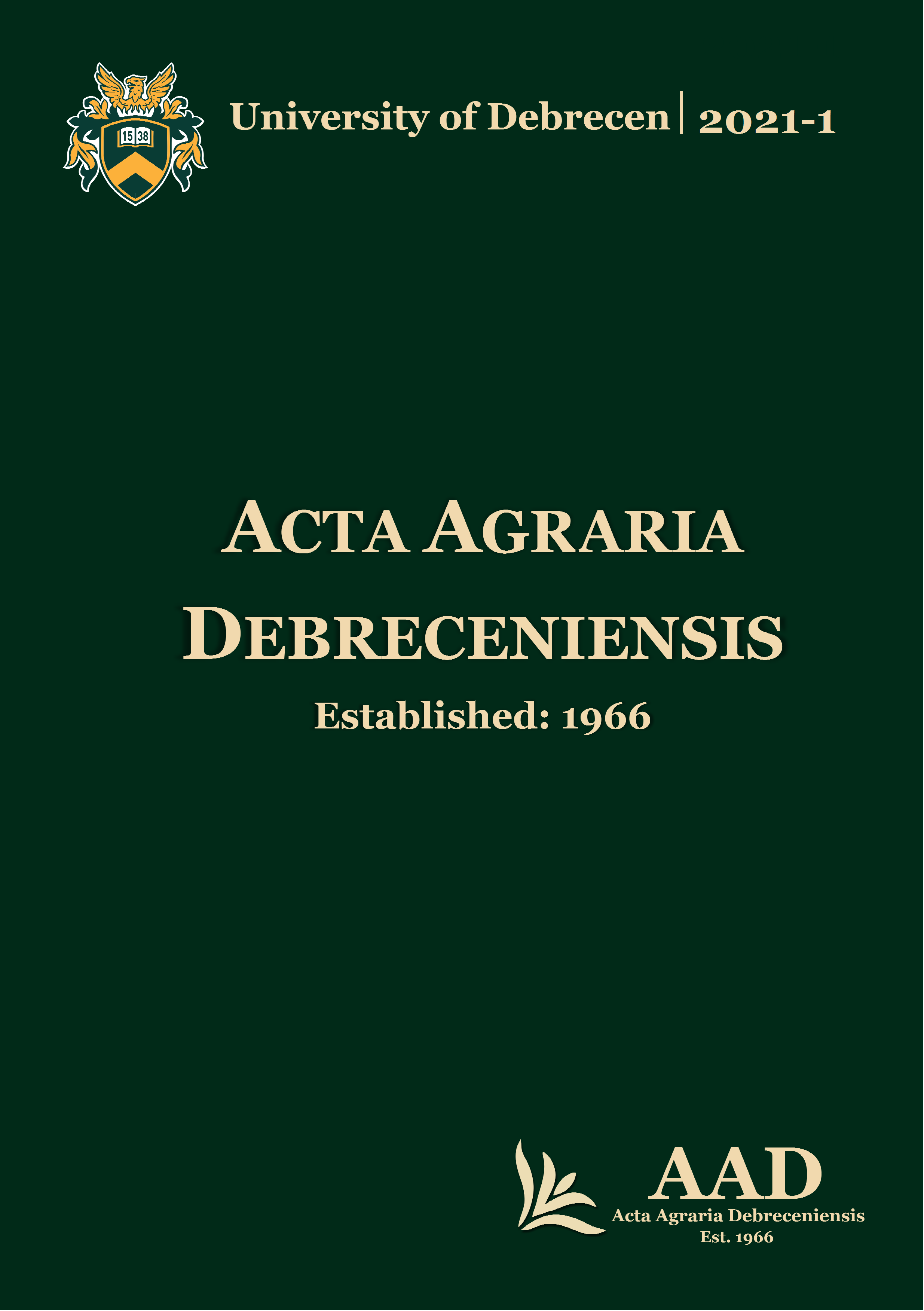Examining the production parameters of European perch (Perca fluviatilis) juveniles under different lighting conditions
Authors
View
Keywords
License
Copyright (c) 2021 by the Author(s)

This work is licensed under a Creative Commons Attribution 4.0 International License.
How To Cite
Accepted 2021-03-01
Published 2021-06-01
Abstract
European perch (Perca fluviatilis) is a native predatory fish in Hungary, and a promising new species of fresh water aquaculture nowadays. The European perch can be characterized by a high stress sensitivity during the intensive rearing, thus the optimization of environmental conditions has significant importance in the early life stages of fish. The aim of our study was to determine whether the light intensity and darkening of the water by humic acid affect the survival and growth performance of European perch juveniles. The experiment lasted for 28 days. Rectangular aquariums were arranged in 3 lines, the test environment consisted of 24 units. The experiment was set up with 10–10 fish per aquarium, total of 240 individuals. The average wet body weight of the fish at the start of the experiment was 1.69 grams. During the experiment, 6 treatments in 4 replicates were set up. In the first row, we set up 305.6±66.0 LUX (L), in the second row 118.0±24.4 LUX (C), and in the third row (D) 17.0±8.6 LUX illumination was set up. In each row the water of four aquariums were darkened by the addition of humic acid (H) (L, LH, C, CH, D, and DH). At the end of the experiment high survival rate was observed in all treatments. Examining the survival rate, the best results were found in the strongly illuminated treatments (L; LH- SR%=100±0.00). The observed mortality was caused by cannibalism. Regarding the individual body weight, the best results were shown by the treatments where the aquariums were illuminated with lower light intensity (C: 4.66±0.33 grams) and the aquarium water was darkened by humic acid (CH: 4.93±0.15 grams). The results of the C and CH groups were significantly better compared to the other treatments, however, they did not differ statistically from each other. The darkening of the water had a positive effect on the individual body weight of fish reared under full light (L: 3.73±0.28 grams; LH: 4.33±0.28 grams), whereas in the case of fish reared in the lowest illumination, the addition of humic acid did not affect the results (D: 3.78±0.15 grams; DH: 3.80±0.26 grams). In case of SGR (C: 3.64%/day and CH: 3.74%/day) and FCR (C: 0.84 g/g and CH: 0.78g/g) the best results were obtained by the C and CH treatments, also.

 https://doi.org/10.34101/actaagrar/1/8494
https://doi.org/10.34101/actaagrar/1/8494